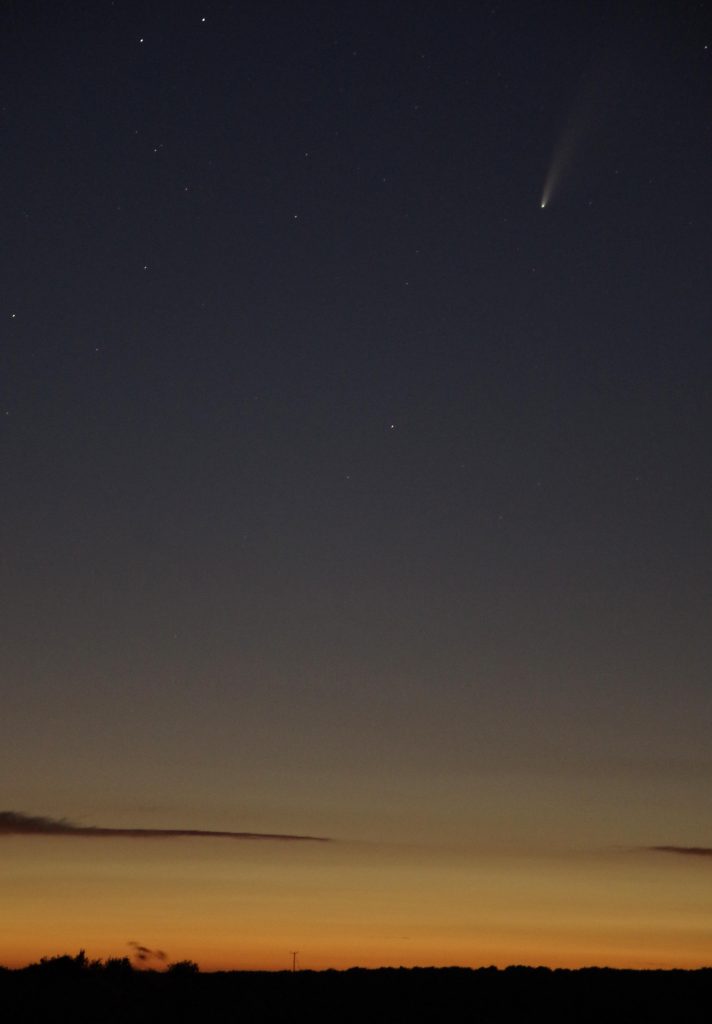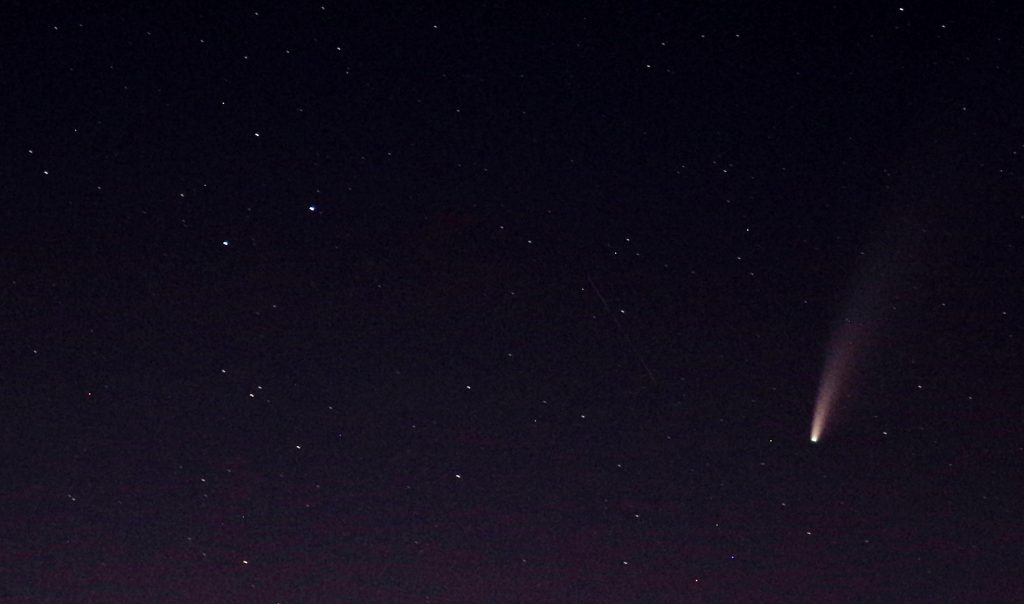Last night I went out to try to see the comet. I drove a couple of miles north of Salisbury to a lay-by on high ground with a clear view to the north. A couple of other people had had the same idea, but it wasn’t too busy.
Fortunately, there was very little cloud and once it got dark enough (about 2030) and I was looking in the right direction (about 2300) it wasn’t too hard to see. With the naked eye I could make out a faint smudge that clearly wasn’t a star and with some very modest binoculars it was clearly visible.
I then attempted to take some photos with moderate success. I had my Pentax K50 and Sigma 17-70 mm zoom. I set it to manual focus at infinity, maximum aperture and 1600 ISO. With the aid of my mini tripod on the roof of the car I was able to achieve multi-second exposures with the results you see below.
The results are OK, but could be better. I was unable to use exposures of more than four or five seconds without the stars starting to turn into streaks due to the earth’s rotation, particularly when I tried to zoom in (when of course I also had a smaller aperture).
I took a number of shots using the camera’s raw mode, but I haven’t yet been able to set up my software to process these. They may allow me to produce better results. I also tried to get the camera to take a multi-exposure series which I might then to able to combine. Unfortunately it wouldn’t do so. I’ll read the manual again with a view to trying again one evening.
As always, click the images for a larger version. I will update this post if I get some better pictures.

